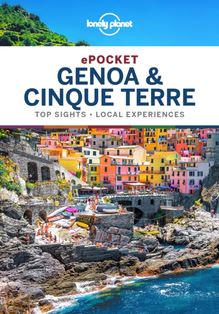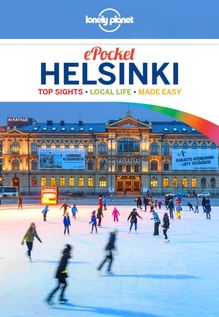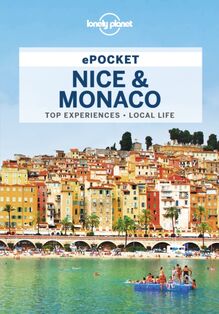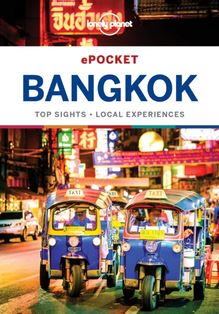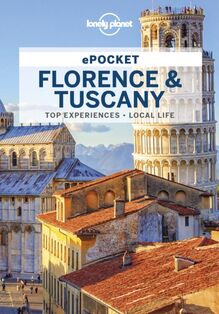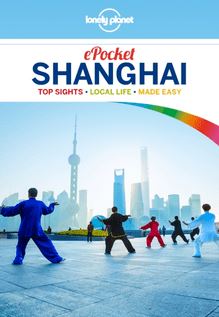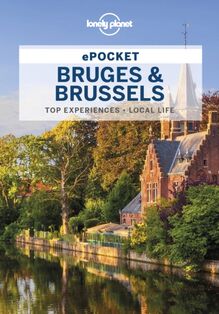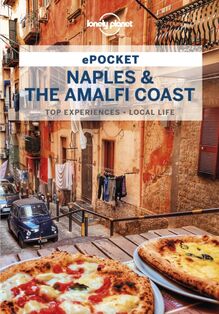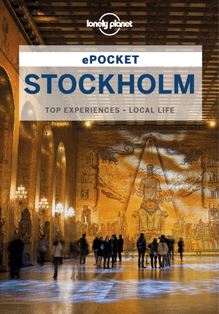-
 Univers
Univers
-
 Ebooks
Ebooks
-
 Livres audio
Livres audio
-
 Presse
Presse
-
 Podcasts
Podcasts
-
 BD
BD
-
 Documents
Documents
-
- Cours
- Révisions
- Ressources pédagogiques
- Sciences de l’éducation
- Manuels scolaires
- Langues
- Travaux de classe
- Annales de BEP
- Etudes supérieures
- Maternelle et primaire
- Fiches de lecture
- Orientation scolaire
- Méthodologie
- Corrigés de devoir
- Annales d’examens et concours
- Annales du bac
- Annales du brevet
- Rapports de stage
La lecture à portée de main
Vous pourrez modifier la taille du texte de cet ouvrage
Découvre YouScribe en t'inscrivant gratuitement
Je m'inscrisDécouvre YouScribe en t'inscrivant gratuitement
Je m'inscrisEn savoir plus
Vous pourrez modifier la taille du texte de cet ouvrage
En savoir plus

Description
Sujets
Informations
| Publié par | Lonely Planet |
| Date de parution | 01 juillet 2019 |
| Nombre de lectures | 5 |
| EAN13 | 9781788685603 |
| Langue | English |
| Poids de l'ouvrage | 42 Mo |
Informations légales : prix de location à la page 0,0425€. Cette information est donnée uniquement à titre indicatif conformément à la législation en vigueur.
Extrait
Contents
Plan Your Trip
Welcome to Jakarta
Top Sights
Eating
Clubs & Bars
Coffee & Tea
Shopping
Architecture
For Kids
Historical Sites
Museums & Galleries
Activities & Tours
Festivals & Events
Four Perfect Days
Need to Know
Jakarta Neighbourhoods
Explore Jakarta
Kota & Glodok
Merdeka Square & Central Jakarta
Cikini & Menteng
Jalan Jaksa Area
South Jakarta
Worth a Trip
Taman Mini Indonesia Indah
Bogor
Walking Tour
Strolling Old Batavia
Survival Guide
Survival Guide
Before You Go
Arriving in Jakarta
Getting Around
Essential Information
Language
Behind the Scenes
Our Writers
Welcome to Jakarta
Jakarta is dynamic, vibrant and chaotic. It’s no oil painting, yet charming juxtapositions can be found on every street. Despite the maddening traffic, life here is lived at speed, driven by an industriousness and optimism that’s palpable. A microcosm of the nation’s 17,000 islands, Jakarta is where Indonesia puts on its best face.
Jakarta nightscape | ALVIAN INDONESIA/Shutterstock ©
Jakarta Top Sights
1 Merdeka Square
The city’s beating heart.
ISTOCK EDITORIAL/GETTY IMAGES PLUS ©
Jakarta Top Sights
1 Museum Nasional
Indonesia’s best museum.
SAIKO3P/SHUTTERSTOCK ©
Jakarta Top Sights
1 Ancol Luar Biasa
Superb outdoor recreation complex.
GILANGTRISTIANO/SHUTTERSTOCK ©
Jakarta Top Sights
1 Jakarta War Cemetery
Remembering tragedy with beauty.
CREATIVA IMAGES/SHUTTERSTOCK ©
Jakarta Top Sights
1 Museum Wayang
Shadowy characters with sticks and string.
BANGOLAND/SHUTTERSTOCK ©
Jakarta Top Sights
1 Jakarta’s High-End Malls
Great brands in plush surroundings.
AIYOSHI597/SHUTTERSTOCK ©
Jakarta Top Sights
1 Street Food in Central Jakarta
Dine alfresco with locals.
ASIATRAVEL/SHUTTERSTOCK ©
Jakarta Top Sights
1 Bogor
Colonial retreat that’s an ideal day trip.
HILDAWEGES PHOTOGRAPHY/SHUTTERSTOCK ©
Jakarta Top Sights
1 Taman Mini Indonesia Indah
Indonesia’s myriad cultures in one location.
SAIKO3P/SHUTTERSTOCK ©
Eating
Jakarta is a world-class eating destination. You’ll find an amazing choice from oh-so-refined Javanese imperial cuisine to cooked-on-the-spot dishes from street vendors. Other cuisines (especially Asian) are well represented and prices are lower than you’d expect. Many lounges and bars serve creative menus from top chefs.
ARIYANI TEDJO/SHUTTERSTOCK ©
When to Eat
Indonesians simply eat whenever they are hungry. The idea of it being a family affair or something to share with friends is less common here. However, as the middle class grows, locals are dining out more for pleasure than mere subsistence. This has fuelled a growing number of modestly priced but very good cafes and restaurants.
Typical breakfast and lunch-times in Jakarta are what you’d find in most places – but dinner can be later. Some restaurants stay open until 10pm and beyond, and some lounges and bars offer excellent menus until well after midnight.
Budgets
Expect to pay around 50,000Rp for a main course in a budget restaurant. This rises to between 50,000Rp and 200,000Rp for the majority of casual restaurants, with top-end hotels and restaurants charging more than 200,000Rp for a main course.
Where to Eat
Street stalls offer excellent, fresh local fare, with many vendors operating out of groups of stalls.
As many Jakartans eschew alcohol, there’s a large selection of cafes offering coffee drinks. Standards are very high (this is Java!) and most places also serve meals.
Many stylish lounge bars also have ambitious kitchens serving creative dishes late into the night.
Restaurants are as varied in Jakarta as anywhere. From casual eateries with noodle and rice dishes to elaborate venues, there is a huge range of cuisines to choose from. The days when hotels were the only places to go for a fancy meal are long past.
Malls dot the city, especially in the south, and have food courts with international fast food outlets and fancier chains.
Best Indonesian
Warung Ngalam Classic Indonesian dishes done well, served at a single-seater bar.
Historia Hip, retro restaurant off Fatahillah Sq serving Indonesian mains.
Warung Daun New Age versions of Indonesian classics served in a lush compound.
Best International
Por Que No Spanish tapas in a rooftop eyrie.
OKU High-end Japanese dishes in a minimalist environment.
Honu Poke Hawaiian-style rice bowls heaped with a choice of salmon, tuna, tofu or chicken.
Best Romantic Eats
Shanghai Blue 1920 Lavish furnishings, including exquisite antiques, are the setting for excellent Indonesian-Chinese dining.
Lara Djonggrang Imperial Indonesian cuisine and seafood, with a beautiful bar.
Worth a Trip: Afternoon Tea
Lewis & Carroll ( % 0812 1381 8465; www.lewisandcarrolltea.com ; Jl Bumi 4, Kebayoran Baru, Jakarta Selatan; dishes 55,000-125,000Rp; h 8am-10pm) has many locally sourced teas. The loose-leaf teas are served in trays of test tubes that you can smell before ordering. The cafe also serves dishes from all-day breakfast classics to organic salads and pastries.
Jakarta on a Plate
Gado Gado
HANS GEEL/SHUTTERSTOCK ©
Gado Gado in Jakarta
The cuisine of the Betawi (the original inhabitants of the Jakarta region) is known for its richness.
Gado gado, a dish of steamed bean sprouts and various vegetables, is served with a spicy peanut sauce, is a Betawi original. So is ketoprak (noodles, bean sprouts and tofu with soy and peanut sauce), which is named after a musical style, because it resembles the sound of ingredients being chopped.
o Top Three Gado Gado in Jakarta
Gado Gado Bon Bin ( map ; % 021-392 5404; Jl Cikini 4; mains 25,000-35,000Rp; h 10am-5pm)
Lenggang Jakarta ( map ; www.lenggangjakarta.com ; Merdeka Sq; mains from 20,000Rp; h 10am-11pm)
Plataran Menteng ( map ; % 021-2962 7771; www.plataran.com ; Jl Cokroaminoto 42; h 11am-10pm)
Ketoprak | ARIYANI TEDJO/SHUTTERSTOCK ©
Clubs & Bars
If you’re expecting the capital of the world’s largest Muslim country to be a sober city with little in the way of drinking culture, think again. Bars are spread throughout the city. You’ll find rooftop lounge bars, pubs serving excellent meals and clubs partying through the night.
ANDREA PISTOLESI/GETTY IMAGES ©
Booze Restrictions
New licences have been implemented for businesses so authorities can monitor and control who is selling alcohol.
Beer sales in convenience shops were banned nationwide in 2015. Although this policy was reversed in Jakarta after protest, many convenience shops in Jakarta have chosen to tread carefully and remain dry.
You’ll find beer in some Jakarta supermarkets and minimarts, but it’s often almost hidden.
Many restaurants with bars as well as lounges have quietly de-emphasised their alcoholic drinks. ‘Mocktails’ are prominently featured.
A proposed law that would have prohibited all sales of alcohol in Indonesia was introduced into the legislature by conservative Islamic parties in 2016. In previous years mainstream parties quickly killed such bills, but this time the bill stayed alive until the session ended. Conservatives plan to continue pursuing it.
Clubs
Jakarta was once one of Southeast Asia’s biggest clubbing hot spots. This was thanks to a great variety of venues, which hosted internationally renowned DJs on thunderous sound systems. While that still holds true to a certain extent, the scene has been dialled down – you can still go clubbing in Jakarta, just not with the previous raw abandon.
Entrance is typically 50,000Rp to 300,000Rp, which includes one drink (many clubs euphemistically call their cover charges the ‘first-drink fee’). Clubs open around 9pm, but don’t really get going until after midnight; some are only open at weekends.
Some venues have very strict door policies regarding dress code and other intangibles.
Online events listings at www.indoclubbing.com are good for planning; www.jakarta100bars.com provides unvarnished context.
Best Stylish Drinks
Cloud Lounge Sophisticated decadence and flaming cocktails in this hip mainstay of Jakarta’s up-market night scene.
Awan Lounge A romantic garden lounge on top of a roof.
Potato Head A brilliant warehouse-style bar-bistro.
Prohibition Nineteen-thirties speakeasy-style bar with a long menu of crafted cocktails.
Best Bars
Brewerkz Sports bar and microbrewery serving craft brews.
Eastern Promise Long-running pub that’s a pre-club stalwart.
Lucy in the Sky Cocktails, DJs and a space with pot plants and retro furniture.
Cloud Lounge Superman-worthy views of the metro-polis from the 49th floor of the Plaza tower.
Best Clubs
Dragonfly Jakarta’s poshest club; gets the best touring DJs.
Colosseum Club Vast club with a huge dance floor and a 16m-high roof.
Immigrant Glamorous local and expat crowd and DJs mixing R&B, hip-hop and more.
Coffee & Tea
Java is so synonymous with coffee that, in many parts of the world, it’s the name used for the drink. Certainly coffee is well respected in Jakarta and there are dozens of locally owned and operated places where you can get a superb cup. In Jakarta there’s never a need to visit an international chain.
DEDE SUDIANA/SHUTTERSTOCK ©
Coffee History
Coffee was introduced to Indonesia by the Dutch, who founded plantations around Jakarta, Sukabumi and Bogor. Because of the country’s excellent coffee-growing conditions, plantations began to spring up across Java, as well as in parts of Sulawesi and Sumatra. Early on the prominent coffee was arabica, which took the name of its origin, hence the common names java, mocha (from Yemen) etc. Robusta has replaced arabica as the coffee most grown because it is easier and cheaper to produce – though coffee drinkers say that arabica is far superior.
Third-Wave Coffee
Jakarta has fully embraced the third-wave coffee scene, a movement that celebrates excellent-quality artis
-
 Univers
Univers
-
 Ebooks
Ebooks
-
 Livres audio
Livres audio
-
 Presse
Presse
-
 Podcasts
Podcasts
-
 BD
BD
-
 Documents
Documents
-
Jeunesse
-
Littérature
-
Ressources professionnelles
-
Santé et bien-être
-
Savoirs
-
Education
-
Loisirs et hobbies
-
Art, musique et cinéma
-
Actualité et débat de société
-
Jeunesse
-
Littérature
-
Ressources professionnelles
-
Santé et bien-être
-
Savoirs
-
Education
-
Loisirs et hobbies
-
Art, musique et cinéma
-
Actualité et débat de société
-
Actualités
-
Lifestyle
-
Presse jeunesse
-
Presse professionnelle
-
Pratique
-
Presse sportive
-
Presse internationale
-
Culture & Médias
-
Action et Aventures
-
Science-fiction et Fantasy
-
Société
-
Jeunesse
-
Littérature
-
Ressources professionnelles
-
Santé et bien-être
-
Savoirs
-
Education
-
Loisirs et hobbies
-
Art, musique et cinéma
-
Actualité et débat de société
- Cours
- Révisions
- Ressources pédagogiques
- Sciences de l’éducation
- Manuels scolaires
- Langues
- Travaux de classe
- Annales de BEP
- Etudes supérieures
- Maternelle et primaire
- Fiches de lecture
- Orientation scolaire
- Méthodologie
- Corrigés de devoir
- Annales d’examens et concours
- Annales du bac
- Annales du brevet
- Rapports de stage
